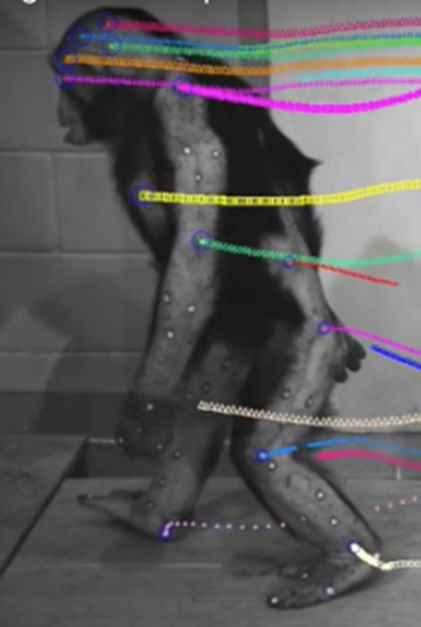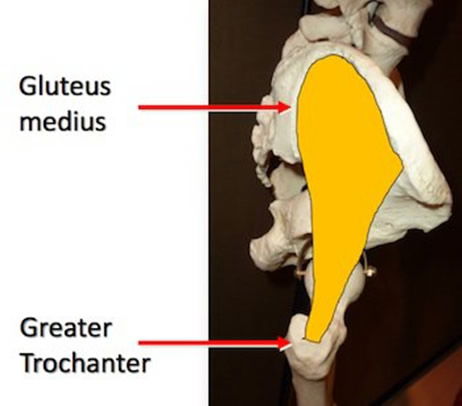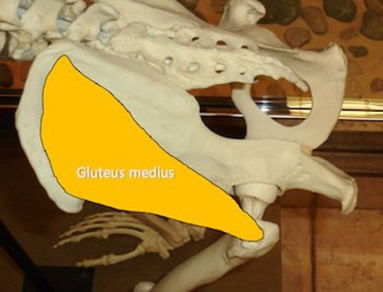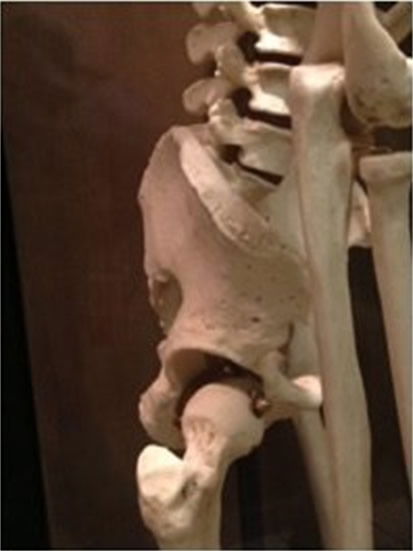
Did Humans Walk Like Chimps Up the Evolutionary Tree?
News to Know
Abstract
Chimps twisting their trunks supposedly teach how human bipedalism evolved.
News Source
- Smithsonian: “Walking Chimps Move in Surprisingly Similar Ways to Humans”
- National Geographic: “Meet the Chimps That Lawyers Argue Are People”
What can chimps strolling down a walkway tell us about how humans learned to walk on their own two feet? More than previously thought, claim the evolutionary authors of a study recently published in Nature Communications.
Hercules and Leo, the two chimps who learned to walk upright for this study in their Stony Brook University laboratory home, were also losers in a lawsuit last summer. The unsuccessful suit, brought on their behalf by the Nonhuman Rights Project and currently being appealed, asserts that a chimp is legally a person entitled to basic rights and liberties. Meanwhile, though not appearing in court, Hercules and Leo have supposedly shown Stony Brook researchers clues about how humans evolved the ability to walk.
A Surprising Twist
Chimps and gorillas do not normally walk upright, but they can for a time if they want to. However, even with training, bipedal locomotion remains unnatural and inefficient for them because of their anatomy. Hercules and Leo were trained to habitually walk on two legs. Then researchers attached motion sensors to various parts of their bodies and filmed them walking. By comparing their walk to that of human volunteers, researchers confirmed that humans and chimps do not walk the same way.

This is a screen shot from a Nature video showcasing the motion analysis of a chimp trained to walk on two feet. The ape rotates his pelvis in a large arc with the stepping foot to keep his balance. Stony Brook researchers learned that chimps, rather than keeping their backs stiff, can twist their rib cages in the same direction as their hips. By contrast, humans rotate the hips only slightly and rotate the rib cage in the opposite direction. You may view the Nature video at Smithsonian magazine.
The Stony Brook team did find one surprise, however. Until now, scientists have thought that chimpanzee trunks are inflexible and must remain rigid, exaggerating the sway they require to remain upright. The Stony Brook team found that when walking upright, their chimps could twist their ribs back and forth with every step. Humans do this too, but chimps’ ribs twist in the opposite direction.
The Walking Human
Hip rotation and counter-rotation of the rib cage are important elements of the human gait. By twisting our chest and pelvis in opposite directions, we avoid having to catch ourselves as we spin back and forth with each step. Instead, the opposing pelvic and chest motions cancel much of our rotational momentum, decreasing the energy needed for taking the next step forward and maintaining balance. We humans also usually swing our arms. Each arm swings back as the corresponding leg moves forward. This arm swing cancels out rotational momentum too. The energy we thus save can be used to help us walk fast and run faster.
But human bipedal walking—and running—depend on more than counter-rotation of our hips and ribs, legs and arms. The shapes, angles, and relationships of the bones, muscles, and connecting tissues in our feet, ankles, knees, calves, thighs, and hips work together to achieve a dynamic design that changes its characteristics during every step. From hips to toes, our stepping limb is flexible and springy during the first part of a step. However, as the foot is planted, many bones lock to form rigid weight-bearing levers able to transfer our weight as we rock forward. The 26 perfectly shaped foot bones with their ligaments, tendons, and arches keep the foot loose enough to absorb shock and adapt to uneven surfaces while remaining stable enough to support the human body’s full weight. The curvature of our back also aids balance.
Human bipedalism hinges in part on our wing-like pelvic bones—the iliac blades. We automatically balance on our planted leg, easily staying upright without tilting or swaying, while our stepping foot is off the ground because our iliac blades are curved.
Here’s how it works. As shown below, each human iliac blade is curved in such a way that a muscle attached to it—the gluteus medius, painted yellow in the picture below—runs downward like a gun’s holster. This muscle connects the winged iliac’s outer curve to the thigh bone below it. By tugging sideways on the planted leg’s thigh bone isometrically—without moving it—while the opposite leg is lifted, the gluteus muscle keeps you upright, balanced on one leg. This stabilizes your hip; otherwise, you would collapse to the side of the lifted leg when you take a step. Learn more about how the marvelous designs of the human foot and pelvis enable us—but not apes—to walk through the world with ease in the illustrated articles “Scars of Evolution or of a Sin-Cursed World?,” “Lucy, the Knuckle-Walking “Abomination”?,” “Flexi-feet: Did Some Humans Fail to Leave Them in the Trees?,” “Walking Up the Evolutionary Tree,” and “Did Our Ancestors Evolve Into Humans Feet First?”


As a consequence of these iliac blade shapes, the gluteus medius muscles of the human (left) and the chimpanzee (right) pull the greater trochanter of the thigh bone in different directions. In the human, the muscle tugs the thigh bone of the “standing” leg sideways isometrically (without moving it) as the “stepping” leg is lifted. This isometric pull keeps the hip from collapsing toward the side of the lifted leg. In the ape, the gluteus medius muscle pulls not sideways but backward. This keeps the quadrupedal animal from falling forward onto its face, but it deprives the ape of the ability to balance efficiently while walking on two legs. Instead, the ape must sway awkwardly, swinging the stepping leg out to the side, or twisting the pelvis in an exaggerated manner like the chimps in the Stony Brook study.



Here, in sketches from a Nature video describing how chimp trunks twist and in the skeletal models of the human (left) and chimpanzee (right) pelvis below them, the curved iliac blades of the human pelvis are easily contrasted with the flat iliac blades of the chimpanzee. Drawings are from NatureVideo via Smithsonian magazine. All skeletal images are courtesy of Dr. David Menton.
The Walking Ape
Chimpanzees and gorillas, unlike humans, have flat iliac blades; therefore, their gluteus medius muscles are oriented differently. While walking on four legs, their backward-oriented muscles keep them from falling forward on their faces. But without curved iliac blades, the muscles cannot stabilize the planted leg during bipedal stepping.1 To compensate—to keep from falling over when lifting its leg to step—an upright walking ape tends to sway dramatically. It might lean far to the side of the stationary leg to keep its balance as it steps. It also may swing its stepping leg widely while rotating its pelvis in a wide arc. During bipedal walking, the chimpanzee pelvis rotates a lot more than the human pelvis, the Stony Brook team confirmed, and this rotation is accompanied by twisting of both the lower and the upper back.
Unlike the energy-saving counter-rotational arrangement in humans, the chimp’s torso and pelvis rotate in the same direction. The Stony Brook team thinks that the exaggerated pelvic rotation and directionally matched trunk rotation in apes “likely does generate some reduction in angular momentum as compared with walking with a fully rigid trunk.” Acknowledging other anatomical differences between humans and apes they add, “The larger pelvic motions in nonhuman primates may be due to musculoskeletal differences such as iliac blade orientation and gluteal muscle position, and/or may be necessary to increase stride length while walking with short, flexed lower limbs.”2
More study will be needed to determine exactly how the chimp’s twisty trunk helps it walk. Despite the dramatic differences in the ways humans and chimps twist to keep their balance, however, the Stony Brook researchers conclude that the newly discovered flexibility of the chimp’s back shows “that regardless of the precise reconstruction of thoracic shape and lumbar length in the last common ancestor and other fossil hominins, counter rotations of the thorax and pelvis would have been feasible early in the evolution of human bipedalism.”3
An Australopithecine Connection?
Evolutionists generally maintain that an ape-like ancestor of humans, an australopithecine like Lucy, had evolved the ability to walk on two legs as it made evolutionary progress toward becoming human. Though like most evolutionists they believe Lucy was bipedal, the Stony Brook team admits there is little agreement about how much Australopithecus afarensis (Lucy) could move its pelvis as it walked, writing that “interpretations of pelvic motion . . . in Au. afarensis vary greatly.”4
Chimpanzee flexibility may, however, suggest how Lucy could manage to walk, they think. They acknowledge that it is uncertain from fossils how flexible or inflexible australopithecines were. However, the flexibility of the chimp’s trunk, if also present in Lucy and her kin, could have helped them achieve bipedal locomotion, regardless of which way they twisted their pelvis, they write. Whether Lucy’s gait was more like a chimp’s awkward efforts or a human’s they leave open to speculation. In truth there has been a good deal of creative analysis by many experts in an effort to accurately reconstruct the afarensis pelvis and demonstrate that it was a habitually bipedal creature. Read “Lucy the Knuckle-Walking ‘Abomination’?” to learn how expert opinions differ and how the evidence demonstrates that Lucy was actually a knuckle walker.
Observations and Interpretations
The Stony Brook researchers, with the assistance of their nonhuman colleagues Hercules and Leo, have shown that chimps have more flexibility in their backs than previously suspected. And though they don’t know yet just how it works, they suspect that chimps compelled to walk on two feet can use this flexibility to aid their balance. This much of their work is observational science. Their observations also confirm that when apes walk on two legs they can keep their balance, but not in the efficient way humans do.
Humans are anatomically designed to be bipedal. The study of counterfeit bipedalism in living animals not anatomically equipped to walk efficiently on two legs cannot reveal how humans acquired the great design that enables us to walk and run on two legs. The Stony Brook team’s research has discovered nothing about human evolution. They have only learned about ape anatomy and how chimps move in the present, not how a hypothetical common ancestor moved in the past.
The Walking Person?
National Geographic’s journalist speculates that the release of video footage showing Hercules and Leo strolling along may help their court case for legal personhood. Humans like to anthropomorphize animals, imagining animals think the way we do, especially if they superficially resemble us. And while we should certainly oppose animal cruelty—“a righteous man regards the life of his animal” (Proverbs 12:10)—ethical issues rise to new heights when chimps are involved. Why? Because many people are convinced we share a common ancestor. It is as if we look at chimps and think, “There, but for the grace of the evolutionary tree, go I.”
The idea that chimps should be recognized as persons flows naturally from the evolutionary falsehood that humans are highly evolved animals. This notion that humans evolved from ape-like ancestors like Lucy is a worldview-based belief unsupported by observational science. From God’s eyewitness account of our origins in Genesis, we know that He created Adam and Eve fully functional, able to walk and talk. Humans were created on the same day as all kinds of land animals, including apes, and did not evolve from them or have to evolve the ability to walk. And the fact that an ape—be it a cute furry animal like Leo or an extinct ape like Lucy—is able to learn to walk on its hind legs or has some similarities to humans does not demonstrate that it is a biological evolutionary cousin of human beings or a person with human rights.
Only humans were created in God’s image. No matter how cute some consider chimps, we would do better to protect the lives of unborn humans than to seek legal personhood for chimpanzees. Furthermore, we should never think of human beings as animals, products of molecules-to-man evolution. On the contrary, we are the crown of God’s creation (Psalm 8:4–9), the special objects of His love, and the rebellious people for whom Jesus Christ died.
Further Reading
- Lucy, the Knuckle-Walking “Abomination”?
- Should Sediba Sashay to the Throne for Oldest Human Evolutionary Ancestor?
- New York Court May Grant “Personhood” to Tommy the Chimpanzee
- Are Humans Animals?
- Does Your Dog Understand You Because You Share an Ancestral Bond?
For More Information: Get Answers
Remember, if you see a news story that might merit some attention, let us know about it! (Note: if the story originates from the Associated Press, FOX News, MSNBC, the New York Times, or another major national media outlet, we will most likely have already heard about it.) And thanks to all of our readers who have submitted great news tips to us. If you didn’t catch all the latest News to Know, why not take a look to see what you’ve missed?
(Please note that links will take you directly to the source. Answers in Genesis is not responsible for content on the websites to which we refer. For more information, please see our Privacy Policy.)
Footnotes
- In fact, thanks to the flat iliac blades of the ape pelvis, the gluteus medius muscle tugs the ape’s thigh not sideways but backwards, facilitating efficient locomotion on all fours.
- N. Thompson et al., “Surprising Trunk Rotational Capabilities in Chimpanzees and Implications for Bipedal Walking Proficiency in Early Hominins,” Nature Communications 6, no. 8416 (October 6, 2015), doi:10.1038/ncomms9416.
- Ibid.
- Ibid.
Recommended Resources

Answers in Genesis is an apologetics ministry, dedicated to helping Christians defend their faith and proclaim the good news of Jesus Christ.
- Customer Service 800.778.3390
- © 2024 Answers in Genesis




